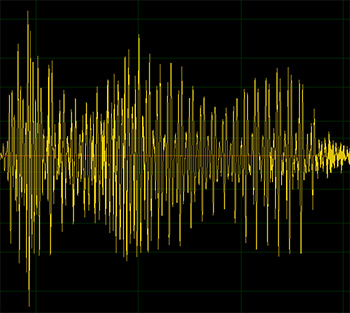Tip #508: Pick the Best Audio Format for Editing
… for Codecs & Media
Tip #508: Pick the Best Audio Format for Editing
Larry Jordan – LarryJordan.com
Choose AIF or WAV audio files. File sizes are larger, but the quality is worth it.


This article, written by Charles Yeager, first appeared in PremiumBeat.com. This is a summary.
When using various audio files in your video edits, such as music tracks and sound effects, does the audio file type really make a difference? (Spoiler: yes, it does.) But the real question is why are there so many different audio file formats? And what is the purpose for each one? So let’s break that down, and in so doing, determine the best audio file formats to use when editing videos.
There are three principle audio groups:
- Uncompressed file formats: .WAV, .AIFF
- Compressed Lossless file formats: .FLAC, .ALAC (Apple Lossless)
- Compressed Lossy file formats: .MP3, .AAC, .WMA, .OGG
UNCOMPRESSED
Uncompressed audio formats are the equivalent of RAW video formats.This allows for a wide range of audio bit depth and sample rates. This results in better audio quality and covers the full frequency that the human ear can hear.
Uncompressed audio files are typically easier to work with in audio and video editors because they require less processing to play back. And since uncompressed files contain more data, you’ll get better results when you’re manipulating the audio in post with various effects.
COMPRESSED LOSSLESS
The name “compressed lossless” may sound like a contradiction. However, the compression isn’t occurring in a way that degrades the audio itself. Think of it almost like ZIP-compressing a music file, then unzipping it during playback.
Compressed lossless audio files can be anywhere from 1/2 to 1/3 the size of uncompressed audio files — or even smaller, while the audio quality is still lossless, enabling full frequency playback.
The drawbacks for compressed lossless files are that they are the least supported (compared to uncompressed and compressed lossy.) They also require a little more computing power to play back, because they need decoding.
COMPRESSED LOSSY
Compressed lossy audio formats are likely the most common audio files you use when listening to music. This is because compressed lossy audio files have the most support among portable devices, and they have the smallest file sizes; up to 1/10 WAV or AIF.
Compressed lossy audio files are ideal for streaming online.
However, all that compression comes at a cost. The drawback is that the audio has a limited frequency range and noticeable audio artifacts when compared to a lossless format. Another drawback is that you have less range in post when it comes to editing and audio manipulation.
WHICH TO USE FOR AUDIO EDITING?
WAV or AIF.


If the sound arriving from my recording device is in one of those other formats, should I convert it to WAV or AIF for editing? The limitations are already cemented into the recording. Converting to WAV or AIF wouldn’t accomplish much.
Ron:
Converting, say, from MP3 to WAV won’t damage quality. And, in fact, FCP X may do that behind the scenes, to make sure any audio effects you add will preserve as much quality as possible.
Larry
Can’t seem to find or build a video compressor setting that allows me to select either wav or aif!!
Dennis:
Remember, WAV and AIF are audio codecs. You’ll find them in the audio settings, not video.
Larry